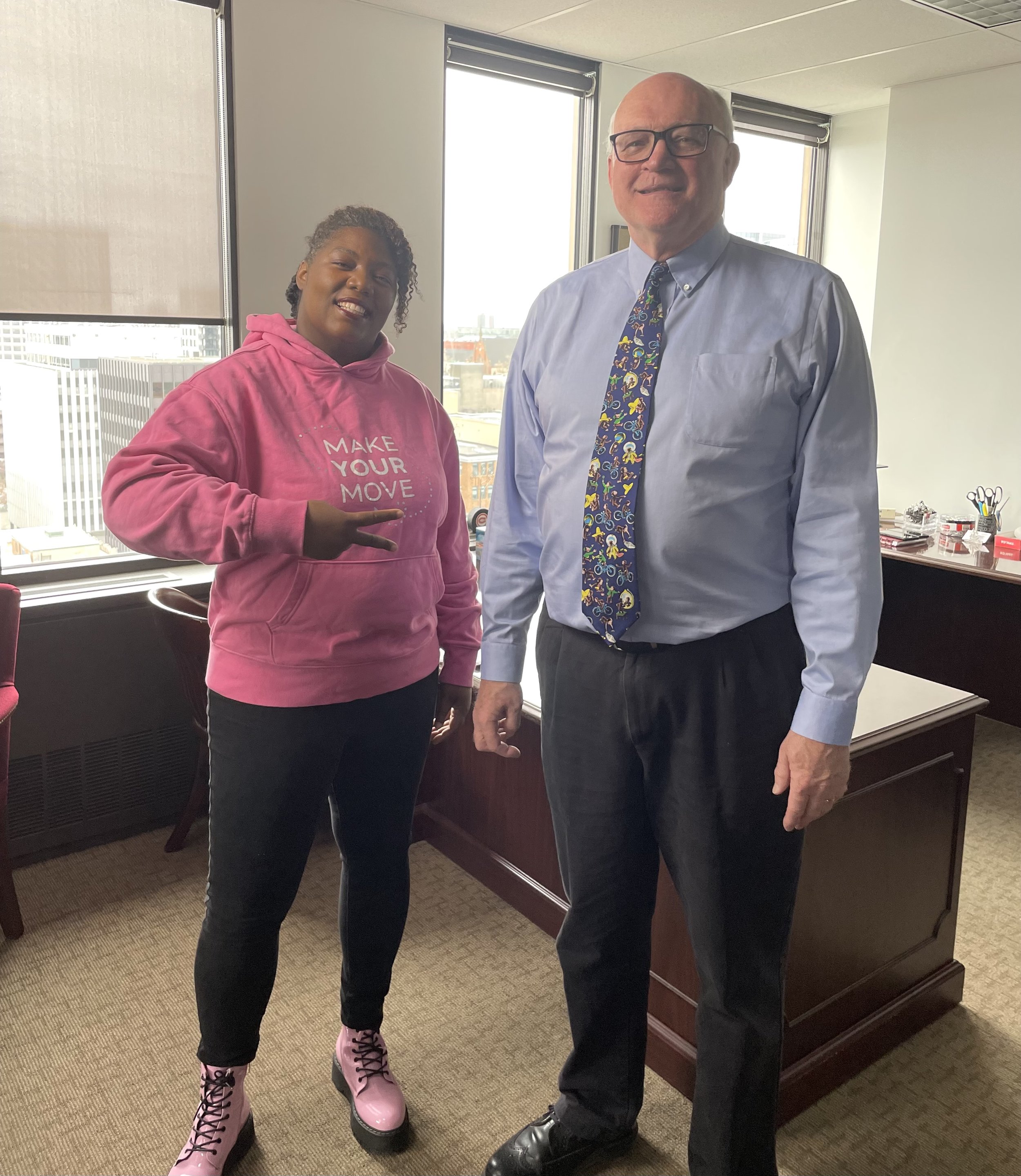Why Dr. Robert Strang believes movement helps build community and connection
Dr. Strang, Nova Scotia’s Chief Medical Officer with Tara Taylor, Movement Ambassador
Dr. Robert Strang, Nova Scotia’s Chief Medical Officer, is well-known to Nova Scotians and helped lead the province during the height of COVID-19 pandemic. He is also a huge proponent of staying active. Dr. Strang believes that moving more, even for just a few minutes a day, is essential for our mental and physical well-being.
Dr. Strang finds ways to add little bouts of movement into his day, and urges others to do the same. He embraces the cultural shift currently gaining global momentum – that moving more in small bursts of activity over the course of the day will help people feel better and be healthier.
Technology troubles
Sometimes creating a work-life balance may be challenging because of technology. While tech can be a great tool and has been essential for education, industry and socializing during the height of the pandemic, technological advances chip away at the amount of movement and activity people do most days.
Cars and computers, as examples, are helpful for some, essential for others, but ultimately mean people do not move as much as they used to. Sedentary lifestyles are becoming the norm.
“It never used to be an issue, but over the past few decades, we have engineered more and more activity out of our daily lives,” Dr. Strang said. “Humans were made to move. Being active is profoundly important. We have to find ways to add movement back in.”
Reduced illness and disease
Building back your activity levels can happen little by little, according to Dr. Strang. “Move more. Sit less. It can be done in very short chunks [of time]. Five to ten minutes of activity, accumulating several times a day, works well.”
The good news is that less can be more!
The science is there. Little amounts of movement, like standing to fold clothes, taking the stairs and even five-minute walking breaks, when combined, help reduce the risk of illnesses such as hypertension and stress, cardiovascular disease, stroke and diabetes.
“Every minute spent moving counts,” said Dr. Strang.
Community building with peers
If 60 seconds can help make a difference, it means we do have time to move more across the day.
When he’s on the job, Dr. Strang uses a convertible desk that can be placed in a sitting or standing position. Most days, he prefers to stand to use his computer or take calls. When he’s done for the day, he leaves his desk in the upright position as a visual cue to start the next work day standing.
Dr. Strang parks a little further away from his office, so he already does a five- to 10-minute walk twice a day without any planning or extra effort. Adding movement into what you already do makes becoming more active less intimidating and time-consuming.
Instead of emailing a colleague in the same building, Dr. Strang gets up from his desk and goes to see them. He also schedules walking meetings. These are two ways to reconnect with people and increase socialization, which Dr. Strang said are key for mental wellness, and have other benefits.
“I know when I get up and move, I think more clearly. If I’m being active, it sparks creativity. That’s the value of walking meetings with a small number of people,” Dr. Strang said.
Connection building with loved ones
That respect for and belief in the power of movement spills over into Dr. Strang’s private life. He’s the father of three, and his two eldest children no longer live at home. One is on a university rugby team, a sport her father also played.
Dr. Strang has advice for parents and guardians whose children and grandchildren are involved in sport. “When we’re watching the kids at sports, maybe meet up with others beforehand. You usually arrive early, so go for a short walk as a group. Or walk the concourse at a hockey rink between periods. You don’t have to sit the entire game. Get up and stand or move a bit.”
Movement is a conduit for connection, especially for Dr. Strang and his youngest child.
“We have a son with significant special needs. He’s 17. Home is very much about Thomas. He loves to be out walking, watching the wind blow through the trees. On weekends, we like to get out in nature, which is an important part of our routine and the connection between the two of us.”
Whether you are moving a little more getting to work, during lunchtime or at home, adding activity to your daily life will ultimately help you, your colleagues and your family. Becoming less sedentary is profoundly important in today’s society, where movement has become less of a priority and is no longer routine.




